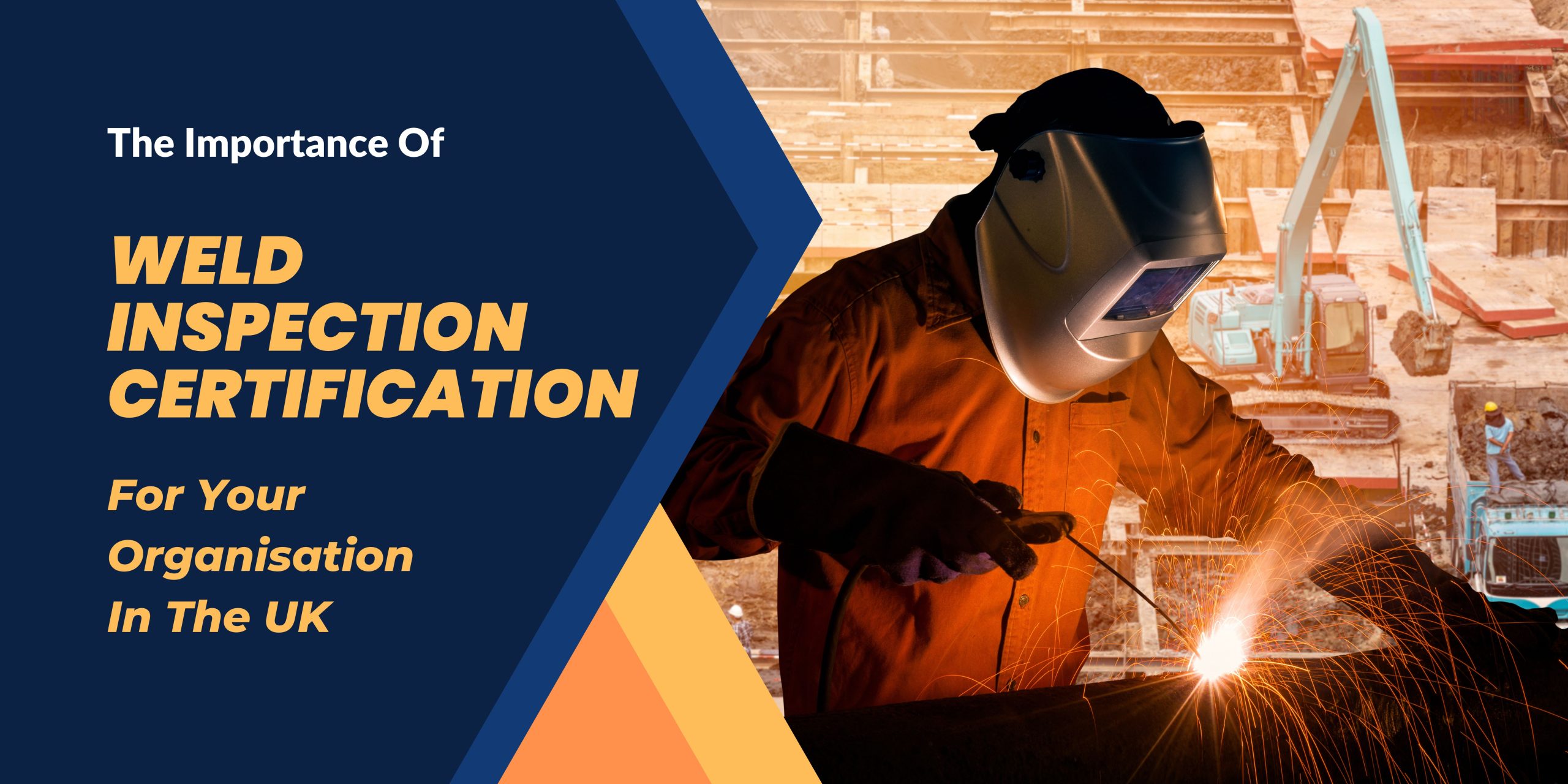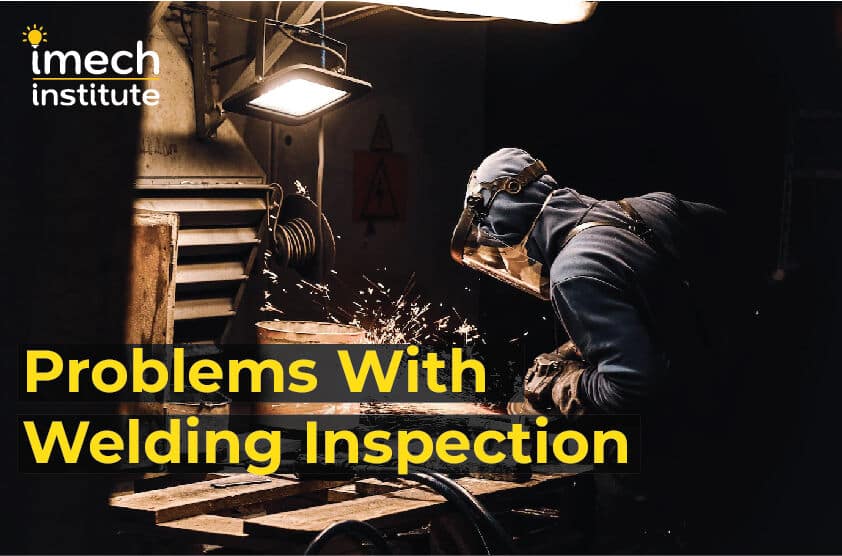What to Anticipate from a Comprehensive Welding Inspection Racine
What to Anticipate from a Comprehensive Welding Inspection Racine
Blog Article
Innovative Approaches to Fillet Weld Inspection and Testing: Enhancing Weld High Quality and Conformity Requirements
In the realm of welding, the high quality and stability of fillet welds play a vital duty in guaranteeing the structural sturdiness and dependability of different industrial components. With the constant drive for enhanced performance and conformity with strict requirements, the exploration of cutting-edge strategies to fillet weld examination and screening has ended up being vital.
Advanced Non-Destructive Screening Approaches
Utilizing cutting edge innovations, advanced non-destructive screening methods play a vital role in making sure the stability and high quality of fillet welds. These approaches, such as phased selection ultrasonic screening (PAUT) and magnetic fragment testing (MPT), deal thorough insights into the weld's internal framework without triggering any damage to the material. PAUT, as an example, utilizes several ultrasonic components to inspect the weld from different angles, providing a detailed visualization of possible defects like lack of blend or splits.
Similarly, MPT is efficient in identifying surface-breaking problems by applying an electromagnetic field and iron particles to the weld area. This technique is especially valuable for recognizing suspensions that might jeopardize the weld's toughness. By using these sophisticated non-destructive screening strategies, weld assessors can properly assess the quality of fillet welds, guaranteeing compliance with market requirements and guidelines. The capacity to detect flaws early not only improves weld high quality however likewise avoids expensive rework or failures in structural stability, highlighting the importance of these innovative testing approaches in welding inspections.
Robotics and Automation in Examination
The assimilation of robotics and automation has revolutionized the examination procedure for fillet welds, enhancing performance and accuracy in quality analysis. Robotics provide precise control and repeatability in checking welds, guaranteeing reputable and regular outcomes. Automated systems can be configured to follow certain evaluation courses, guaranteeing thorough protection of welds and reducing the danger of human mistake.
Robotic inspection systems furnished with advanced sensors can detect and determine weld attributes with high precision, supplying thorough data for evaluation. These systems can determine issues such as cracks, lack of blend, and porosity, enabling timely rehabilitative activities to be taken. Additionally, robotics and automation enable for real-time data collection and analysis, supplying prompt feedback to operators and promoting fast decision-making processes.
Additionally, making use of robotics and automation in fillet weld examination improves general performance by reducing evaluation times and enhancing assessment throughput. By simplifying the inspection process, producers can make sure weld high quality and conformity standards are met effectively, eventually causing set you back financial savings and improved item high quality.
Using Artificial Knowledge for Analysis
Artificial knowledge plays a critical duty in improving the efficiency and precision of analysis in fillet weld examination processes. AI formulas can swiftly process vast quantities of information from weld assessments, spotting issues or disparities that might be challenging to identify with the naked eye - Welding Inspection Racine.
Furthermore, AI systems can find out from past assessment information, constantly enhancing their capacity to identify prospective defects and variances in fillet welds. This flexible resource learning ability improves the total quality assurance process, minimizing the chance of human error and guaranteeing that welds satisfy the needed requirements. By integrating expert system right into fillet weld analysis, markets can achieve greater levels of efficiency, consistency, and conformity in their examination techniques.
Portable Tools for On-Site Evaluation
 Enhancing field evaluation effectiveness, the fostering of mobile tools transforms on-site evaluation procedures for fillet welds. These devices use flexibility and convenience, allowing examiners to carry out extensive exams in numerous areas, consisting of tough or remote environments. Portable devices such as ultrasonic screening tools, magnetic fragment examination tools, and electronic radiography systems give real-time information and high-resolution imaging capacities, making it possible for fast decision-making and instant comments on weld high quality.
Enhancing field evaluation effectiveness, the fostering of mobile tools transforms on-site evaluation procedures for fillet welds. These devices use flexibility and convenience, allowing examiners to carry out extensive exams in numerous areas, consisting of tough or remote environments. Portable devices such as ultrasonic screening tools, magnetic fragment examination tools, and electronic radiography systems give real-time information and high-resolution imaging capacities, making it possible for fast decision-making and instant comments on weld high quality.One significant advantage of portable devices is their capacity to enhance inspection procedures, reducing downtime and boosting total performance. Examiners can quickly carry these tools to various work websites, getting rid of the need for carrying heavy machinery or parts to off-site centers. Furthermore, the portability of these devices promotes cost-effectiveness by reducing transportation expenditures and speeding up evaluation timelines.
Furthermore, using portable devices for on-site assessment promotes aggressive quality assurance measures, as assessors can immediately identify and resolve any type of potential welding problems or disparities. By integrating these cutting-edge innovations into on-site assessment methods, welding specialists can guarantee conformity with market criteria and enhance weld top quality, ultimately page leading to boosted structural stability and safety in different welding applications.
Assimilation of Data Monitoring Systems
Having actually optimized on-site evaluation procedures through the application of portable devices, the following phase includes the smooth integration of data administration systems to further enhance effectiveness and information analysis capacities in fillet weld evaluation and screening. Welding Inspection Racine. By incorporating information management systems into the examination procedure, organizations can improve information collection, storage space, and analysis. This combination permits for real-time monitoring of weld quality, immediate identification of flaws, and prompt decision-making to correct any type of concerns that may occur during the evaluation procedure
Information management systems play a crucial role in centralizing evaluation data, promoting very easy accessibility for accredited employees, and making certain data stability and safety. With the combination of these systems, examiners can produce detailed reports, track historical data for trend evaluation, and boost total procedure efficiency. Furthermore, the assimilation of information monitoring systems allows seamless communication between various stakeholders entailed in the assessment process, fostering partnership and improving general quality control measures. Eventually, the integration of information management systems offers to raise the standards of fillet weld examination and testing, guaranteeing conformity with market regulations and boosting weld quality.
Final Thought
To conclude, innovative techniques to fillet weld inspection and testing have actually significantly improved weld quality and conformity criteria. Advanced non-destructive testing techniques, robotics, automation, fabricated intelligence, portable tools, and information monitoring systems have transformed the method weld examinations are conducted. By using these modern technologies, industries can guarantee that welds satisfy the called for top quality criteria and regulations, ultimately enhancing general effectiveness and safety and security in welding procedures.

By using these advanced non-destructive testing techniques, weld inspectors can properly analyze the top quality of fillet welds, ensuring conformity Discover More with sector criteria and guidelines. Portable tools such as ultrasonic testing devices, magnetic fragment examination devices, and digital radiography systems supply real-time information and high-resolution imaging capacities, making it possible for fast decision-making and immediate responses on weld top quality.
Having actually optimized on-site assessment procedures via the usage of portable tools, the next phase involves the smooth combination of data management systems to better improve performance and data analysis capabilities in fillet weld evaluation and screening (Welding Inspection Racine). Eventually, the integration of information administration systems serves to boost the requirements of fillet weld evaluation and screening, making sure compliance with sector guidelines and improving weld quality
 In final thought, innovative approaches to fillet weld examination and testing have significantly improved weld quality and conformity requirements.
In final thought, innovative approaches to fillet weld examination and testing have significantly improved weld quality and conformity requirements.Report this page